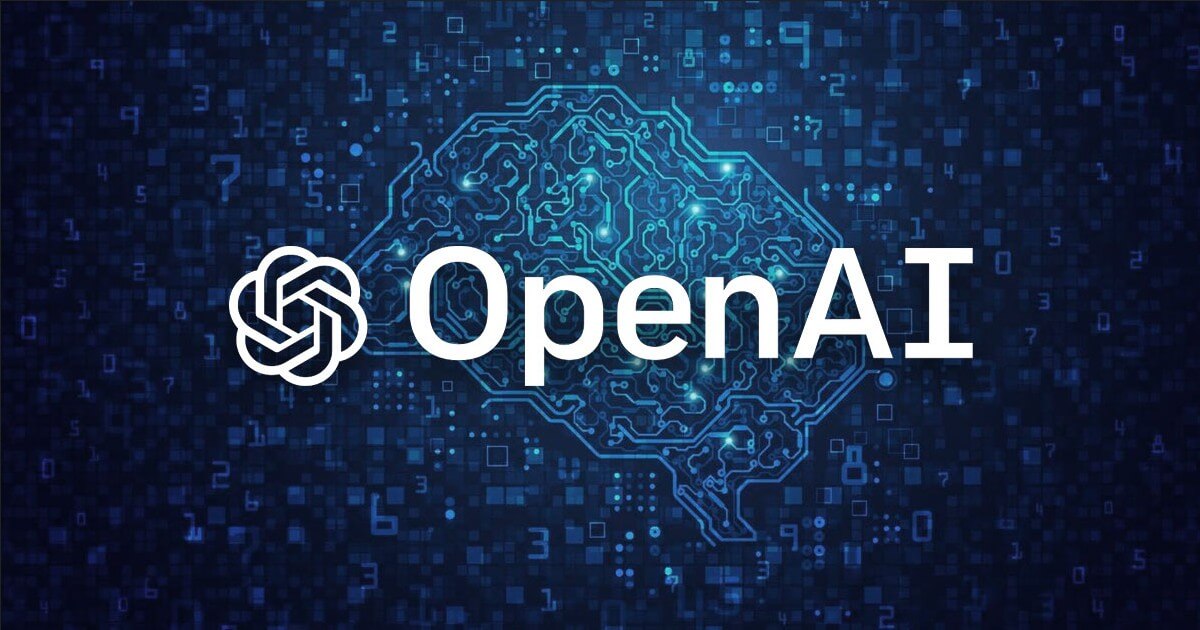Building Voice Assistants Made Easy: OpenAI's 2024 Announcements

Table of Contents
Streamlined Development Platforms
OpenAI's new tools simplify the traditionally complex process of building voice assistants. Gone are the days of extensive coding and intricate configurations. The focus is now on accessibility and efficiency.
Simplified APIs
OpenAI's commitment to user-friendly APIs is a game-changer. These APIs significantly reduce the coding burden, making voice assistant development accessible to a broader audience.
- Reduced complexity of API calls: OpenAI's APIs are designed with intuitive structures, minimizing the technical hurdles. Complex tasks are broken down into manageable, easily understandable API calls.
- Improved documentation: Comprehensive and well-organized documentation makes navigating the APIs a breeze. Clear examples and tutorials are readily available to guide developers through the process.
- Pre-built modules for common tasks: OpenAI provides pre-built modules for common voice assistant functionalities, such as speech-to-text conversion, intent recognition, and natural language understanding. This allows developers to focus on the unique aspects of their voice assistant, rather than reinventing the wheel.
These simplified APIs drastically reduce development time and resources, allowing you to build a functional voice assistant prototype much faster. For example, integrating speech-to-text functionality now requires only a few lines of code, compared to the extensive work required previously.
Pre-trained Models
Leveraging pre-trained models is another significant advancement. These models, already trained on massive datasets, provide a solid foundation for faster and more accurate speech recognition and natural language understanding.
- Fine-tuning options for specific voice characteristics and accents: OpenAI's pre-trained models can be fine-tuned to recognize specific accents and voice characteristics, enhancing accuracy and personalization.
- Multilingual support: Many of OpenAI's pre-trained models offer multilingual support, enabling the creation of voice assistants that cater to diverse audiences.
- Readily available models for various applications: OpenAI offers a range of pre-trained models optimized for different applications, from simple voice commands to complex conversational AI.
Using pre-trained models significantly reduces training time and improves accuracy from the outset. This allows developers to quickly build high-performing voice assistants without needing vast amounts of training data. For instance, a developer can quickly implement a highly accurate English speech-to-text function by leveraging a pre-trained model and then fine-tune it for a specific regional dialect.
Enhanced Natural Language Processing (NLP)
OpenAI's advancements in NLP are crucial for creating natural and intuitive voice interactions. The improvements empower voice assistants to understand and respond to users in more human-like ways.
Improved Contextual Understanding
OpenAI's NLP models now exhibit a much stronger ability to handle complex conversations and maintain context over extended interactions.
- Better understanding of user intent: The models can more accurately interpret user requests, even when phrased ambiguously.
- Improved dialogue management: The models can manage multi-turn conversations, keeping track of previous exchanges and responding appropriately.
- Ability to handle interruptions and corrections: The models are more robust in handling interruptions and mid-conversation corrections, mimicking a natural conversational flow.
This improved contextual understanding leads to a more seamless and intuitive user experience. The voice assistant can understand nuanced requests, follow complex instructions, and maintain a coherent conversation, leading to higher user satisfaction. For example, the assistant can now correctly interpret a request like "Remind me to call John tomorrow, but only if it doesn't rain," handling the conditional statement and contextual information effectively.
Advanced Sentiment Analysis
OpenAI's advancements in sentiment analysis allow voice assistants to analyze user emotions, enabling more empathetic and personalized responses.
- Ability to detect frustration, happiness, etc.: The models can identify positive, negative, and neutral sentiments in user utterances, providing valuable insights into the user's emotional state.
- Integration with other OpenAI tools for emotional response generation: This sentiment analysis can be integrated with other OpenAI tools to generate responses tailored to the detected emotion, creating more human-like interactions.
By understanding the user's emotional state, the voice assistant can adapt its responses to create a more positive and engaging experience. For instance, if the user sounds frustrated, the assistant can offer additional help or clarification, rather than a generic response.
Cost-Effective Solutions
OpenAI's flexible pricing models make voice assistant development accessible to individuals and small businesses. Traditional methods often required substantial upfront investment, but OpenAI offers affordable options.
Flexible Pricing Tiers
OpenAI provides a range of pricing plans to cater to various needs and budgets.
- Pay-as-you-go models: Users only pay for the resources they consume, ideal for projects with fluctuating usage.
- Subscription plans: Subscription plans offer predictable monthly costs, suitable for consistent usage.
- Options for different usage levels: OpenAI offers various tiers, allowing users to choose a plan that aligns with their specific usage requirements.
Compared to traditional methods, OpenAI's pricing models significantly reduce the financial barrier to entry. Developers can start small and scale up as their needs grow, making voice assistant development a viable option for a wide range of users.
Integration with Existing Platforms and Services
Seamless integration with popular platforms significantly expands the reach and functionality of your voice assistant. OpenAI facilitates this integration, boosting the potential applications.
Third-Party Integrations
OpenAI's tools enable easy connections with other services and platforms.
- SDKs and APIs for integration: OpenAI provides SDKs and APIs to simplify integration with various platforms.
- Pre-built connectors: Pre-built connectors for popular services streamline the integration process, reducing development effort.
- Examples of successful integrations: OpenAI showcases numerous examples of successful integrations, demonstrating the wide range of possibilities.
This easy integration extends the capabilities of your voice assistant far beyond basic functionalities. Imagine integrating your voice assistant with smart home devices, calendar apps, or messaging platforms—all made easier through OpenAI's tools.
Conclusion
OpenAI's 2024 announcements have truly democratized the development of voice assistants. The streamlined platforms, advanced NLP capabilities, cost-effective solutions, and seamless integrations empower individuals and businesses to create sophisticated, user-friendly voice interfaces. By leveraging OpenAI's tools and resources, you can significantly reduce development time and costs while building a truly exceptional voice assistant. Start building your voice assistant today with OpenAI! Explore OpenAI's offerings and embark on your journey to create the next generation of conversational AI.

Featured Posts
-
 O Impacto Duradouro De Um Trailer Cinematografico 20 Anos De Heranca
May 26, 2025
O Impacto Duradouro De Um Trailer Cinematografico 20 Anos De Heranca
May 26, 2025 -
 Le Cyclisme Feminin Selon Laurence Melys Sur Rtl
May 26, 2025
Le Cyclisme Feminin Selon Laurence Melys Sur Rtl
May 26, 2025 -
 Mathieu Van Der Poels Dominant Paris Roubaix Hat Trick
May 26, 2025
Mathieu Van Der Poels Dominant Paris Roubaix Hat Trick
May 26, 2025 -
 Has Armando Iannucci Lost His Creative Spark An Analysis
May 26, 2025
Has Armando Iannucci Lost His Creative Spark An Analysis
May 26, 2025 -
 Florentino Perez 20 Anos Al Frente Del Real Madrid
May 26, 2025
Florentino Perez 20 Anos Al Frente Del Real Madrid
May 26, 2025
